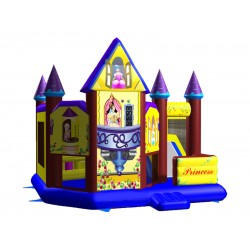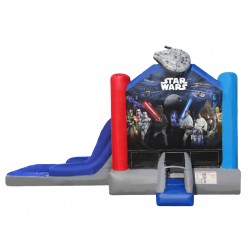Can Using a Bouncy Castle Damage Your Lawn?

Yes, using a bouncy castle on your lawn can potentially cause some damage to the grass, but the extent of damage depends on a few factors:
1. Duration of Use
The longer the bouncy castle is placed on your lawn, the more likely it will cause damage. Prolonged coverage blocks sunlight and reduces airflow to the grass, leading to yellowing or dying patches.
2. Weight and Movement
The weight of the bouncy castle and the jumping activity can compress the grass, making it harder for air, water, and nutrients to penetrate the soil. This can lead to compaction, which weakens the grass.
3. Moisture
If the ground is damp, the weight of the castle combined with the activity on it can create indentations or mud patches, particularly if the bouncy castle is large and heavy.
4. Sunlight Blocking
Grass needs sunlight to thrive. Blocking it with a bouncy castle for long periods can cause the grass to turn yellow or brown due to lack of sunlight.
Tips to Minimize Damage
- Move the Castle: If the event is long, try to move the bouncy castle slightly every few hours to prevent prolonged exposure in one spot.
- Use Tarpaulin: Place a tarp or protective layer between the bouncy castle and the grass to reduce friction and wear.
- Keep the Grass Healthy: Water and mow the grass before setting up the castle to keep it healthy and resilient.
- Limit Time: Try to limit the time the castle is on the lawn to reduce the risk of damage.
After removing the bouncy castle, watering and aerating the lawn can help it recover quickly.



